Lost On Everest: The Story of George Mallory and Andrew Irvine
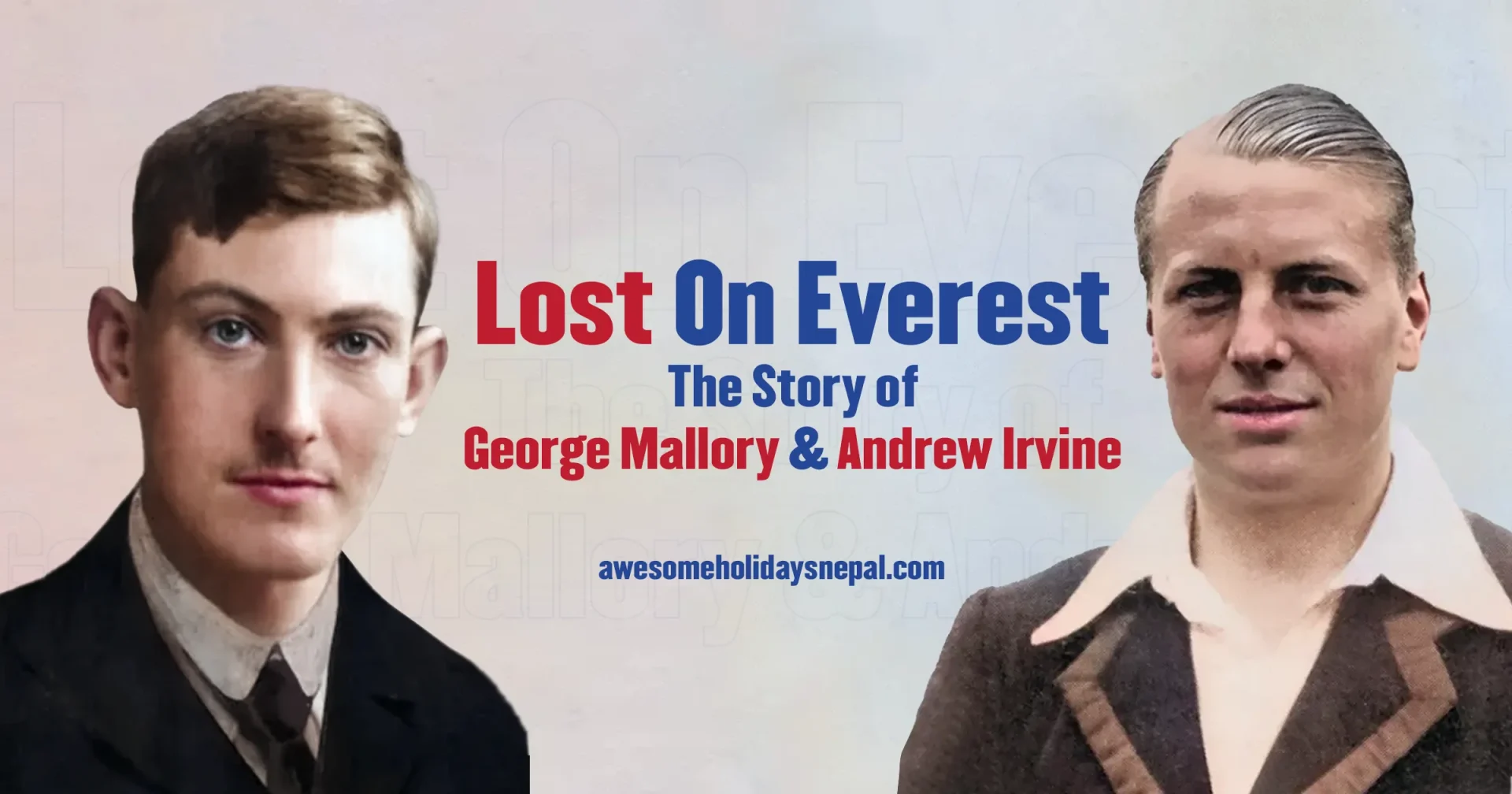
Lost On Everest: The Mystery That Still Echoes!
Many people dream of summitting the tallest peak in the world, but not all can achieve a successful ascent. Then what about the ones lost on Everest? Well, that’s often a mystery like that of George Mallory and Andrew Irvine, the daredevils who were lost on Everest.
Let’s dive deeper into the stories of such lost souls in the terrains of Everest.
Story of George Mallory and Andrew Irvine
In June 1924, two British climbers vanished high on the icy slopes of Mount Everest, pursuing a dream to become the first to reach the summit of Everest in history. The world would not know for decades whether these men, George Mallory and Andrew Irvine “Sandy”, dressed in tweed and wool, armed with primitive oxygen gear, had stood atop the world before disappearing into the clouds forever. What motivated them to risk everything for a name on the mountain?
The story of George Mallory and Andrew Irvine has haunted generations of climbers in the mountains. This is a tale of daring, obsession, and the relentless pull of the world’s highest peak. The mountain has changed, technology has advanced, and thousands of people have reached the top of Everest, but the question still echoes through the Himalayas: Did Irvine and Mallory reach the summit first? And at what cost? Where is the Kodak camera now?
On June 8, 1924, both George Mallory and Andrew Irvine were last seen 240 m below the summit as they attempted to become the first humans to reach the top of Everest, a feat that would be achieved 29 years later by Tenzing and Hillary. As George Mallory said, to refuse the adventure is to run the risk of drying up like a pea in its shell.
Nearly a century later, the allure of their journey endures, not just as a footnote in the archives of Everest history, but as a symbol of human ambition at its most audacious.
Who Was George Mallory?
George Leigh Mallory was born in 1886 in the quiet English county of Cheshire. Educated at Winchester College and Cambridge University, he was a man of intellect and artistry. He was a teacher, a soldier, a dreamer, a poet, and an adventurer.
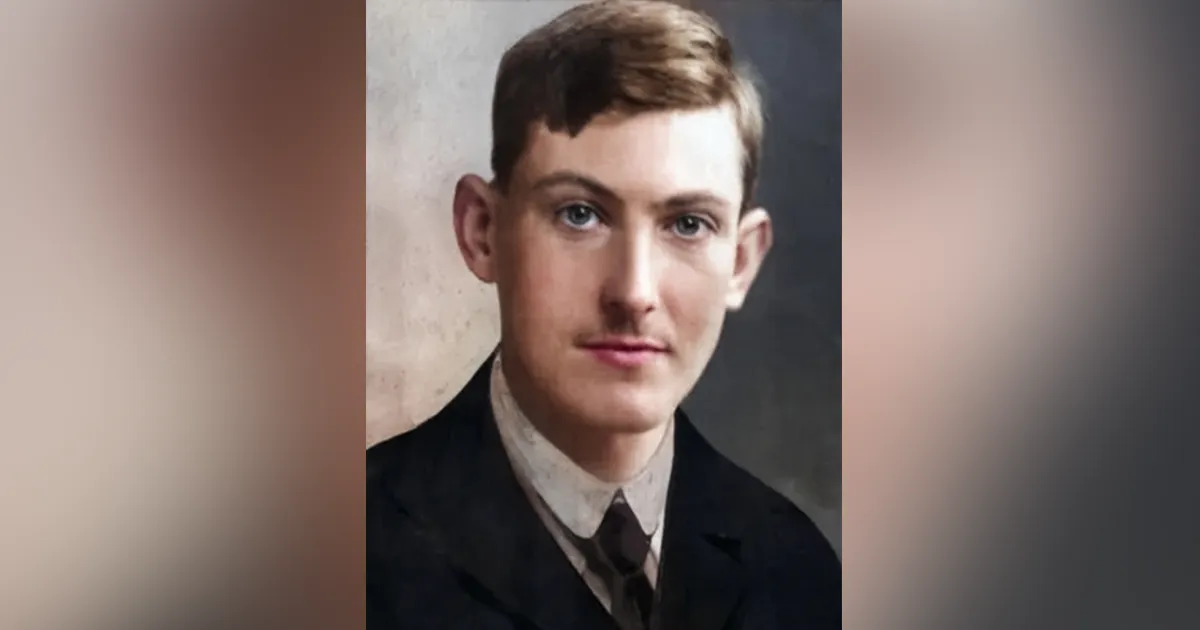
George Mallory was an exceptional climber. His passion for the mountains began at the rugged heights of the UK and blossomed in the Alps. He was invited to the Alps excursion by his teacher. He was able to pioneer new routes and became popular in the English expedition team.
George Mallory served in the Great War of 1914-18 as a gunner on the front line. He was a neat and bold rock climber and a competent ice climber. He was an adventure lover and would encourage his fellow members to do so.
George Mallory and his wife, Ruth, used to live in Holt, the house gifted by Ruth’s father at their wedding on July 29th, 1914. After welcoming their second child on September 16th, 1917, Mallory was posted to London till 1918. He served in France until January 1919 and returned to mountaineering. He returned home on 21 August 1920 and was blessed with their third child, a son, in August 1920. They named their children Francis Clare, Beridge Ruth Leigh-Mallory, and John Mallory.
For him, Everest was not only a personal conquest but also a spiritual pursuit. To George Mallory, Everest wasn’t about utility. It was about beauty, struggle, and the sheer exhilaration of the unknown. His response to the question of why climb Everest, “Because it’s there,” has become an ideology for global mountaineers. But this simple statement comes with a cost: complexity, curiosity, and defiance.
Who Was Andrew Irvine?
Irvine was just 22 years old when he disappeared into the shadows of Everest. Irvine was the youngest member of the 1924 British Everest expedition. Born in 1902 in Birkenhead, England, he was an engineering prodigy from Oxford.
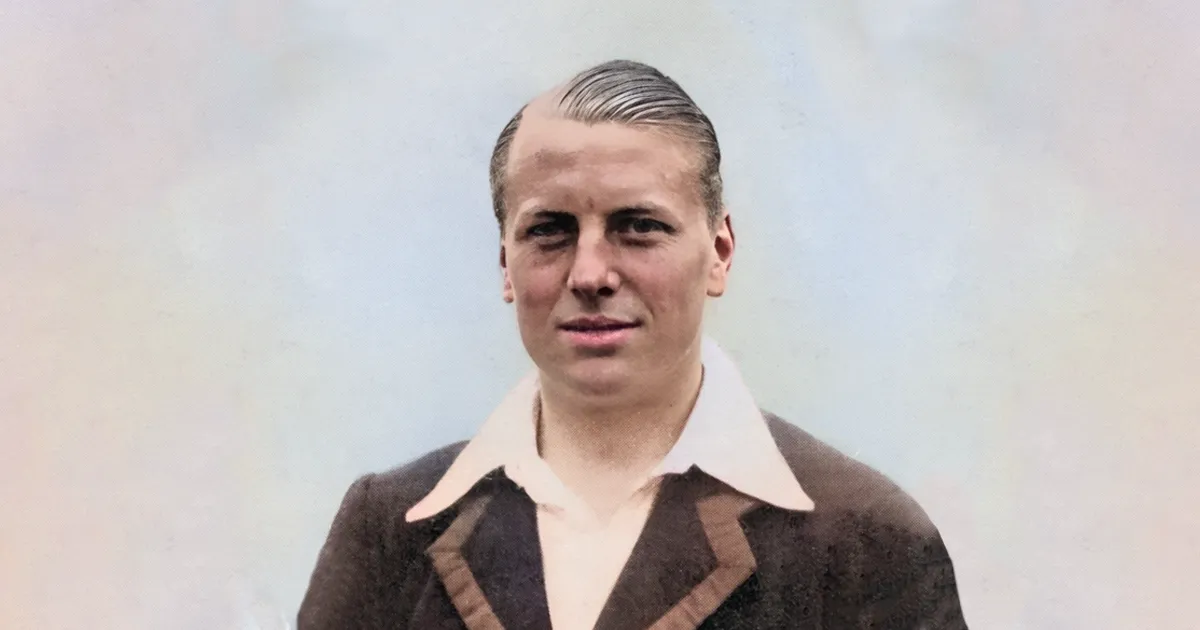
Irvine was known for his physical endurance and inventive spirit. Though he was juvenile to high-altitude Himalayan climbing, his skills were considered indispensable. He had an innate instinct for solving mechanical problems, especially when it came to the expedition’s cumbersome oxygen systems. Many of the inventions and modifications that made those early oxygen paraphernalia to make the expedition possible, a big applause goes to Irvine’s ingenuity. His age belied his remarkable talents.
More than just a technician, Irvine was also an exceptional athlete, rower, and adventurer. His selection for the summit attempt, over more seasoned climbers, spoke volumes about his capability and promise.
George Mallory, when he chose Irvine as his partner, wasn’t just picking a climber but also entrusting his fate to a young man whose courage, brilliance, and determination were already the stuff of legend in the making. Together, they would step into thin air, into a storm of snow, wind, and uncertainty, leaving behind only questions and an enduring legacy written in ice.
The 1924 British Everest Expedition
George Mallory was part of the 2021 Everest expedition Team that established the North Ridge as a possible route to Everest. They were on a mission to conquer a mountain no Westerner had ever climbed. With a little-known map, thin air like on the moon, home-knit clothes, and poorly equipped gear, they challenged the wrath of nature and went on the journey to summit the top of Everest.
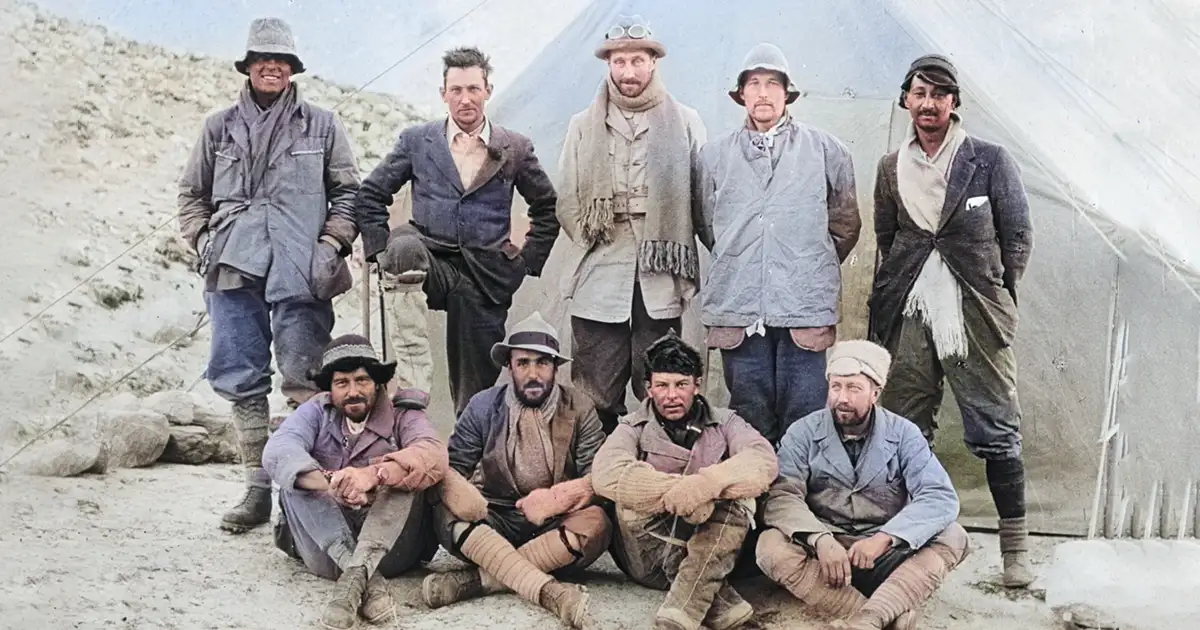
Since they were able to climb up to 8321 m with supplemental oxygen, the team was awarded the Olympic gold medals for alpinism for this effort in the mountaineering field. At that time, it was very difficult to reach the Everest region. They set out from Darjeeling as a survey team from England. The area was closed to visitors from both countries, Nepal as well as China (then Tibet). After getting permits, they began their journey to Everest, taking photos and documenting videos.
Do you know the original and local name of Mount Everest? Click here to find out how Chomolungma was named Everest.
Mallory and his teammate Guy Bullock did most of the early exploration. They hiked long distances, talked to people, explored valleys and glaciers, climbed peaks, crossed rivers, and explored to find a route to Everest. They avoided the dangerous East Face and decided that the North Col held the best chance to reach the top. However, they miscalculated and missed the easiest route, whose consequences they had to suffer in the upcoming days.
This easier route was later discovered by a survey officer, E.O. Wheeler. That year, Mallory and Bullock were able to reach the North Col from a difficult route but returned due to a strong wind. This gave Mallory the confidence to Mallory that climbing to the peak of Everest was possible.
In 1922, another expedition reached 27,000 feet but again ended in tragedy. An avalanche killed seven Sherpa climbers. Cursing himself for the death of the sherpas, Mallory returned home with grief in his heart.
The Other Attempt
By 1924, Mount Everest had already become the ultimate symbol of human ambition. The British were determined to try once more and complete what they started in 2021. Mallory and Irvine were selected as the members of the third 1924 expedition team.
George Leigh Mallory was the only climber to take part in all three of the British expeditions to Mount Everest in the 1920s. Mallory was just 38 when he got the company of 22-year-old Andrew Irvine.
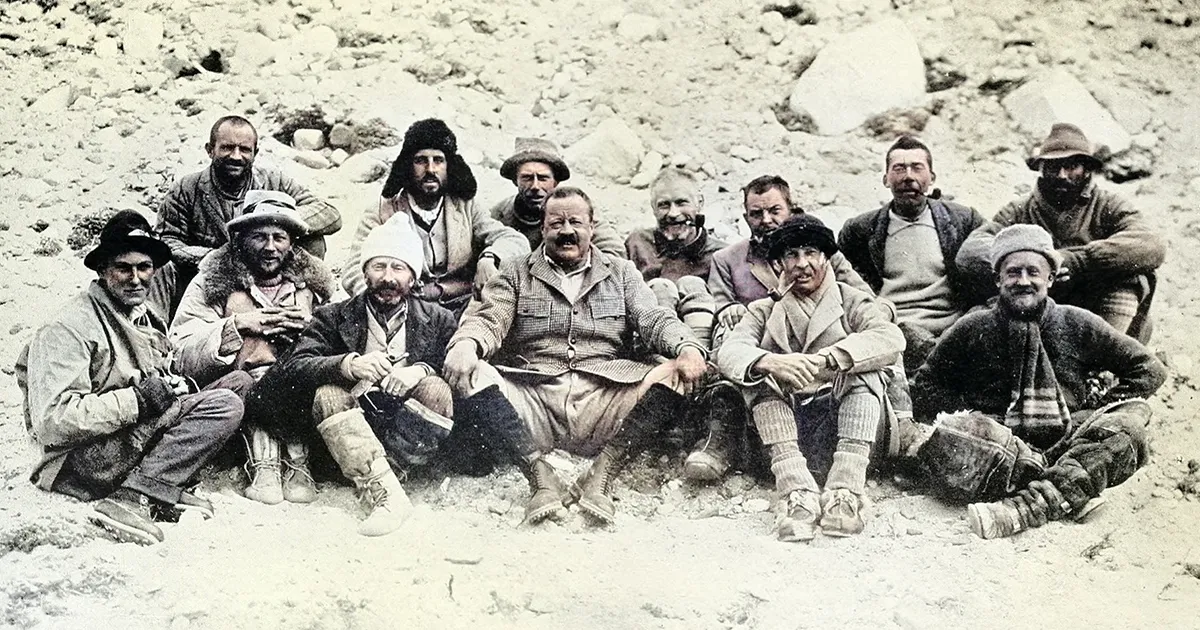
When a third attempt was planned, Mallory was unsure if he wanted to go. Over ten years of marriage, it was hard to leave his family and come back to the Himalayas. He was determined to finish what he had started in 2021. This time, he had a strange feeling and told his friends that this was more like going to a war rather than an adventure. From the Everest base camp, he wrote to his wife, Roth, “I feel strong for the battle, but I know every ounce of strength will be wanted.”
The 1924 British Everest Expedition was well-prepared, experienced, and more focused than ever. The team was led by the charismatic General Charles Bruce and with Edward Norton serving as the climbing leader. Norton himself came tantalizingly close to the summit, reaching a then-record altitude of approximately 8,572 meters (28,126 feet) without supplemental oxygen.
On June 8, 1924, George Mallory and Andrew “Sandy” Irvine left Camp VI for their final push to the top of Everest. They had modified oxygen gear, full of hope and courage, carefully adjusted by Irvine. Noel Odell, an expedition team member, saw two tiny moving silhouettes climbing over a vertical rock face at around 8,600 meters near the daunting Second Step. It was the last time, 12:50 PM, either man was seen alive by anybody.
Find the Lost Gears
In the 1930s, an ice axe that belonged to Sandy was found at about 27,700 feet (8,440 meters). In 1975, a Chinese climber described his encounter with a body that appeared to be that of an Englishman, but it was unknown exactly who it was.
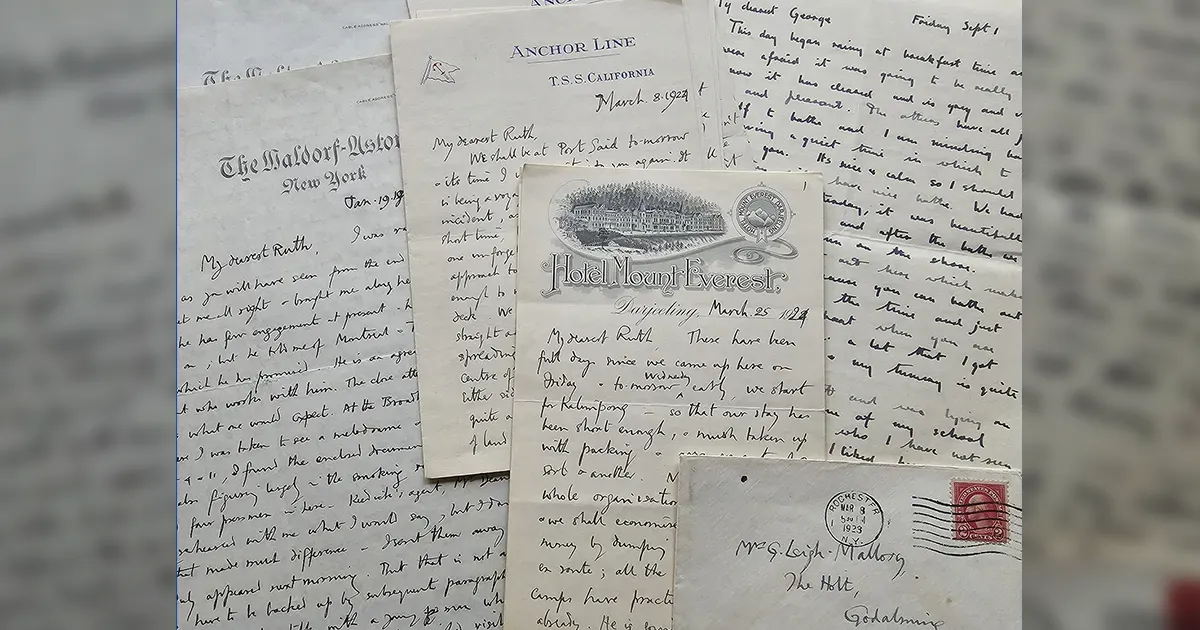
In 1999, Mallory’s body was found by an American climber, Conrad Anker, at 27,000 feet, where it had been swept away by the glacier and moved from its original position. But the thing remained a mystery whether they reached the top or not.
Researchers, after studying Irvine’s axe and the rope attached around Mallory’s waist, concluded that both were attached to a common rope. When one fell, another was dragged together or was able to cut himself free before falling. Their death has become one of the mysterious deaths of the 20th century.
The Mystery of the Lost Camera
In 1970, during an interview, Somervell informed the BBC team that he had given a camera to Mallory. The mysterious camera has never been found, yet the world is eager to find it, as it may contain vital information about their expedition to the top of Everest.
There are many conspiracy theories about the camera and its disappearance. Some suggest that the Communist Party of China removed the body of Irvine and destroyed the camera. Some experts from Kodak film said that if the camera were ever found, the film could be developed using modern technology.
Unsolved Mysteries: Did George Mallory and Andrew Irvine Reach the Summit?
The Mallory and Irvine Research Expedition found some clues to their personal belongings. Their used equipment suggested their expedition to the top of Everest, but was not sufficient to provide valid proof of the summit. The position and attributes of the body of Mallory suggested that he was descending rather than moving up. This strongly suggests that he returned from the top of Everest.
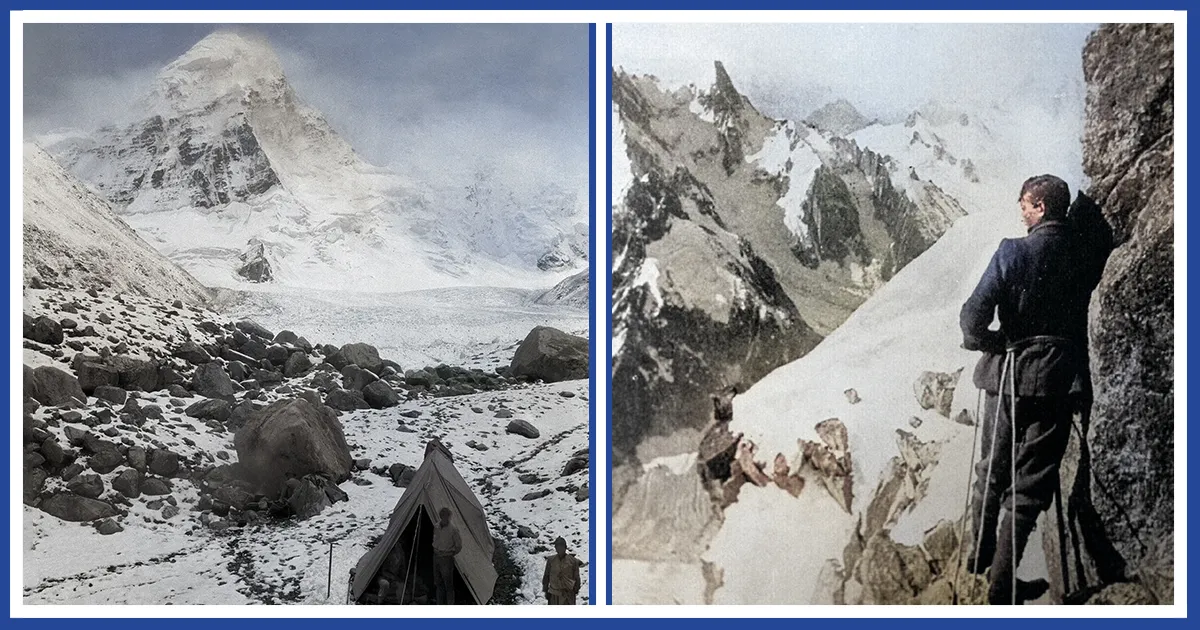
Yet, there is no strong evidence to claim success.
In September 2024, photographer and filmmaker Jimmy Chin found a boot and a sock with embroidery written A.C. Irvine. Jimmy was leading a National Geographic team below the north ridge of Mount Everest. It was verified that this boot belongs to Andrew Comyn Irvine. They searched for the body of Irvine around the second step, the most difficult track on Everest.
The discovery of the body of Mallory and the boot of Irvine could answer some questions, but could not solve the mystery of their reach to the summit. And thus the questions of these souls still persist!
FAQs
Expand AllHow did George Mallory die on Mount Everest?
George Mallory likely died from a fall during his descent from the summit of Mount Everest in 1924. Though the actual reason is unknown, evidence suggests he suffered a fatal head injury after falling down a cliff.
Where was George Mallory’s body found on Everest?
In 1999, the Mallory and Irvine Research Expedition found George Mallory’s body at an altitude of 8,155 meters (26,760 ft) on the north face of Everest.
Did George Mallory summit Everest before his death?
This has remained one of the greatest mysteries of the 20th century, and it still has been a great topic for argument as mountaineering’s greatest mysteries. There’s no definite proof that Mallory or Irvine reached the summit, though some evidence suggests they might have.
What happened to George Mallory’s body after he was found on Everest?
When Mallory’s body was found in 1999, his body was respectfully buried in a cairn on-site by the 1999 expedition team. But now, it’s not where it was buried. Who moved them?
What injuries did George Mallory sustain on Mount Everest?
When George Mallory’s body was found in 1999, there were marks of severe skull fractures and a broken right leg, which might have been caused by a high fall. The rope injury on his waist also suggests that he might have fallen along with Irvine when roped together during their descent.
Why was George Mallory’s camera significant in the discovery of his body?
The Vest Pocket Kodak camera of Irvine might contain some photographs that would confirm whether they reached the top of Everest or not. But, unfortunately, the camera was not found with Mallory’s body, nor was the body of Irvine found.
Who discovered George Mallory’s body on Everest?
American climber Conrad Anker and his team discovered the body of George Mallory in 1999. They were a part of the Mallory and Irvine Research Expedition team.
Was George Mallory’s body recovered from Everest?
Can’t say anything on that. When it was researched later on, the place where it was buried in 1999, the body was not there. Somebody might have moved it from the place. The body was respectfully buried on the mountain on a cairn.
How old was George Mallory when he died on Everest?
George Mallory was 37 years old, just weeks away from turning 38, and young Irvine was just 22.
What books are available about George Mallory’s life and the Everest expedition?
Some of the books published about George Mallory, Andrew Irvine, and their expedition in 1924 are
- Detectives on Everest: The 2001 Mallory and Irvine Research Expedition BY Jochen Hemmleb and Eric Simonson
- Everest: The First Ascent by Harriet Tuckey— While mainly about Griffith Pugh and the 1953 climb, it provides valuable context.
- Everest: The Mountaineering History BY Walt Unsworth
- Ghosts of Everest: The Search for Mallory and Irvine by Jochen Hemmleb, Larry A. Johnson, and Eric R. Simonson
- Into the Silence: The Great War, Mallory, and the Conquest of Everest by Wade Davis
- Last Climb: The Legendary Everest Expeditions of George Mallory BY David Breashears and Audrey Salkeld
- The Lost Explorer: Finding Mallory on Mount Everest BY Conrad Anker and David Roberts
- The Mystery of Mallory and Irvine by Tom Holzel and Audrey Salkeld (1986) – A pioneering investigation into their disappearance.
The Wildest Dream: The Biography of George Mallory by Peter Gillman and Leni Gillman - The Wildest Dream” by Peter Gillman
Is there a documentary about the discovery of George Mallory’s body?
The Wildest Dream: Conquest of Everest (2010), which features the discovery and retracing of Mallory’s route, and Lost on Everest (1999), which documents the 1999 discovery, are the most popular documentaries written on George Mallory.
Where can I find photos of George Mallory’s body on Everest?
Most of the important photos from the 1999 discovery are featured in the book “Ghosts of Everest. You can get the book from the National Geographic archives.
Did George Mallory use oxygen during his Everest climb?
Yes, Mallory and Irvine carried oxygen tanks with them. Irvine had the technical knowledge to innovate the oxygen tanks, though there was a rudimentary supply of equipment in 1924.
Related blog posts
Discover a choice of tourist destinations loved by most of our visitors. Whether you're on a jungle safari to spot rare animals or walking through a world heritage site, these well-planned itineraries cover the major highlights of Nepal.




